HCS and Endura-E engines
Removal of valves should be made from the valve of the first cylinder, which is located closest to the timing system.
Compress the valve spring with a special tool and remove the crackers securing the upper thrust plate of the spring. Remove the top poppet and valve spring, being careful not to damage the valve stem (see fig. 40.25-4D.27).
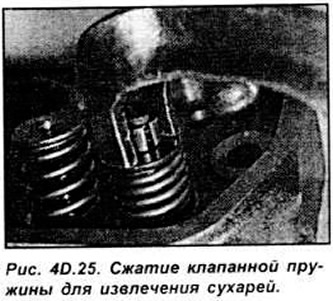
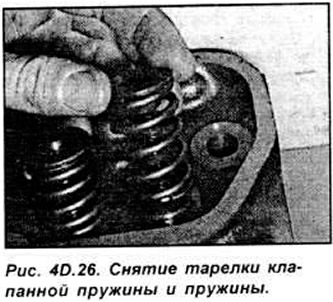

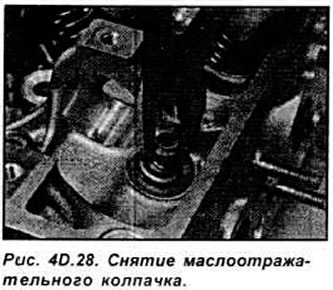
Remove the valve from the head on the combustion chamber side. Using a lever or pliers, remove the oil seal.
Repeat the operation to remove the remaining seven valves. Arrange the parts of each valve assembly in separate plastic bags so that they can be installed during assembly (see fig. 40.29).
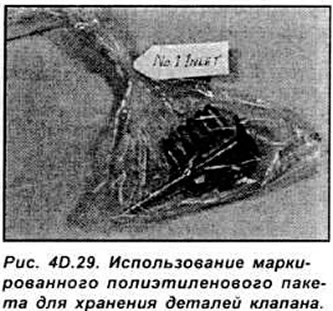
CVH and PTE engines
Remove the camshaft. valve levers and hydraulic tappets.
Removing the valves should begin with the valves of the first cylinder, located near the timing belt drive.
Compress the valve spring with a special tool and remove the crackers securing the upper thrust plate of the spring. Remove the top poppet and valve spring, being careful not to damage the valve stem.
Using a screwdriver, remove the valve stem seal from the valve guide. Remove the lower spring plate.
Remove the remaining valves from the cylinder head in the same manner. Place the parts of each valve in a separate plastic bag.
Zetec and Zetec-E engines
Remove camshafts and hydraulic tappets. Compress the valve springs in order with a special tool and remove the crackers securing the upper thrust plate of the spring. Remove the top poppet and valve spring, being careful not to damage the valve stem.
Remove the valve from the cylinder head from the combustion chamber side.
Using the Ford special tool 21-160, remove the oil seals. In the absence of a special tool, the oil cap can be removed by screwing a spring onto it, the inner diameter of which is slightly smaller than the outer diameter of the cap and pulling the spring, remove the cap (see fig. 4D.30, 4D.31).
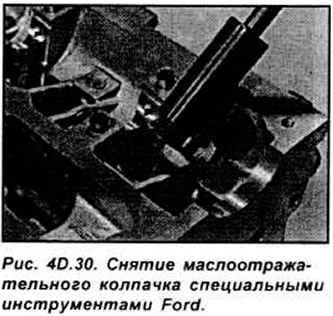
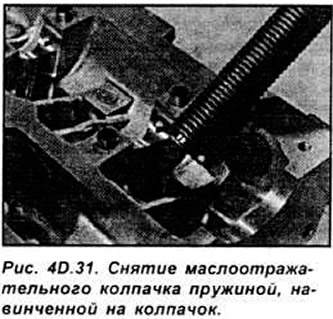
Locate the valve kits in plastic bags and label them for installation.
If necessary, remove the oil line plug in the cylinder head (for complete cleaning of the oil line) it is necessary to drill a hole in the plug and screw a self-tapping screw into it and pull the screw to remove the plug. When assembling the head, you must use a new plug (see fig. 40.32).
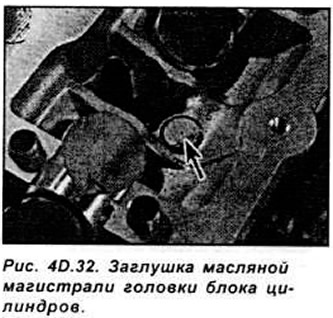
Parts cleaning
Clean the traces of the old gasket and sealant from the cylinder head.
Clean carbon deposits from the combustion chamber and cylinders, then wash the cylinder head with an appropriate solvent.
Clean the channels in the cylinder head with a wire brush.
Checking the cylinder head
Carefully inspect the head for cracks or other damage. If there are cracks in the head, the head must be replaced.
Using a metal ruler and feeler gauge, check the flatness of the mating surface of the head (see fig. 4D.33).
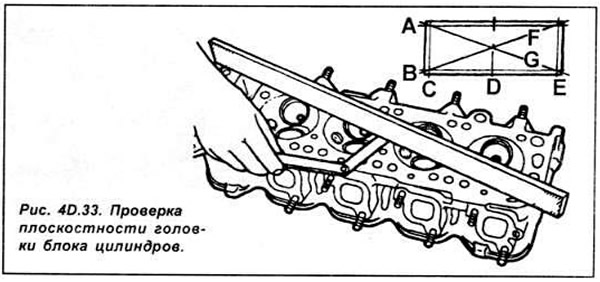
Valve seats with signs of wear or burning must be processed with the obligatory preservation of angles and chamfers. After any treatment of valve seats, they must be lapped.
Check the inside diameters of the valve guides. If the values exceed the maximum allowable value, the valve guides must be replaced by a specialist workshop.
Attention. Replacing the guide also requires resurfacing of the corresponding valve seat.
Checking valves
Check each valve seat for pitting, burns, cracks, and general wear.
If the condition of the valve is satisfactory, then measure the diameter of the valve stem at several points using a micrometer. Any significant difference in valve stem measurements obtained indicates stem wear. In this case, the valve must be replaced.
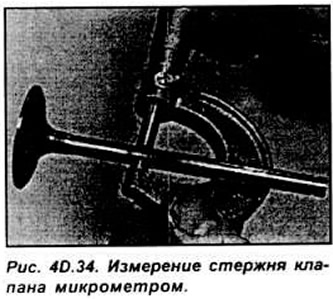
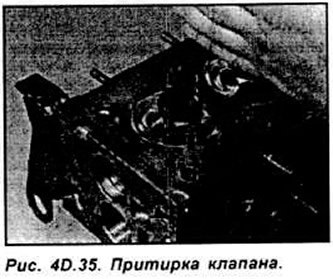
If the valves are in a satisfactory condition, then it is necessary to grind them. The valves should only be lapped with a fine-grained polishing paste. Lubricate the surface of the valve seat with a small amount of paste and install the valve in the appropriate seat. Firmly press the rubber suction cup against the valve disc and rotate the valve to one side or the other.
After the end of the lapping process, thoroughly clean all parts from dirt and paste. Check valve seat and poppet. A solid opaque ring should be visible on both parts, which indicates the width of the valve chamfer.
Checking valve parts
Check the valve springs for wear and tear, and measure their free length If possible, compare each of the existing springs with the new spring (see fig. 4D.36).
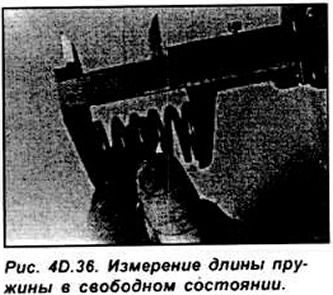
Install the springs on a flat horizontal surface and check for deviations from the horizontal position. If at least one of the springs is damaged, then completely replace all the springs in the kit.
Check the condition of the valve cotters, as well as the location of the cotters on the valve. If there are any defects, damaged parts must be replaced. The oil seals must be replaced every time they are removed. Check valve train parts and hydraulic tappets.
Visitor comments